NRAO eNews
Volume Vol#, Issue Iss#
Day# Month# Year#
Upcoming Events
Seattle AAS Events


National Radio Science Meeting
Jan 9 - 12, 2019 | Boulder, CO

Multi-Messenger Astrophysics: Insights from Combining Gravity and Radio Waves
Feb 16, 2019 | Washington, DC

ALMA Data Reduction Party
Mar 13 - 15, 2019 | Charlottesville, VA

New Horizons in Planetary Systems
May 13 - 17, 2019 | Victoria, British Columbia, Canada

Radio/mm Astrophysical Frontiers in the Next Decade
Jun 25 - 27, 2019 | Charlottesville, VA

7th VLA Data Reduction Workshop
Oct 7 - 18, 2019 | Socorro, NM
Riccardo Giacconi: 1931 – 2018
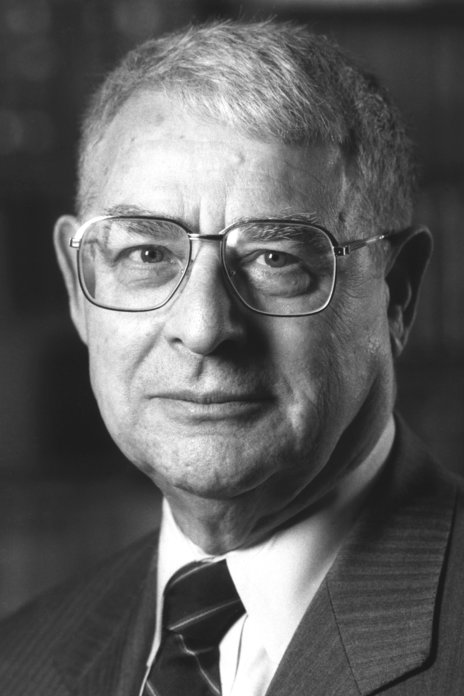
Dr. Riccardo Giacconi
[click to enlarge]
We are very sorry to report the passing of our dear friend and colleague, Riccardo Giacconi, on Sunday, 9 December 2018. Some of us were very fortunate to work directly with Riccardo at various times over the past 60 years. But more importantly, a very large segment of the astronomy and astrophysics community have based their research on facilities which were conceived, built, and/or directed by Riccardo.
We all know he received the 2002 Nobel Prize in Physics for his pioneering work in X-ray astronomy. He progressively red-shifted the bandwidth of his accomplishments, becoming the first Director of the Space Telescope Science Institute and being instrumental in making the Hubble Space Telescope a success, building the Very Large Telescope as Director General of the European Southern Observatory, and while President of Associated Universities Incorporated, expanding the Very Large Array and initiating the construction of the Atacama Large Millimeter/submillimeter Array.
Riccardo is survived by his wife Mirella, daughters Anna and Guia, and grandchildren Alexandra and Colburn. He was pre-deceased by his son Mark. The funeral will be private with immediate family only.
We know the scientific community will continue to appreciate and benefit from Riccardo’s extensive contributions.
Astro 2020 Decadal Survey White Paper Coordination
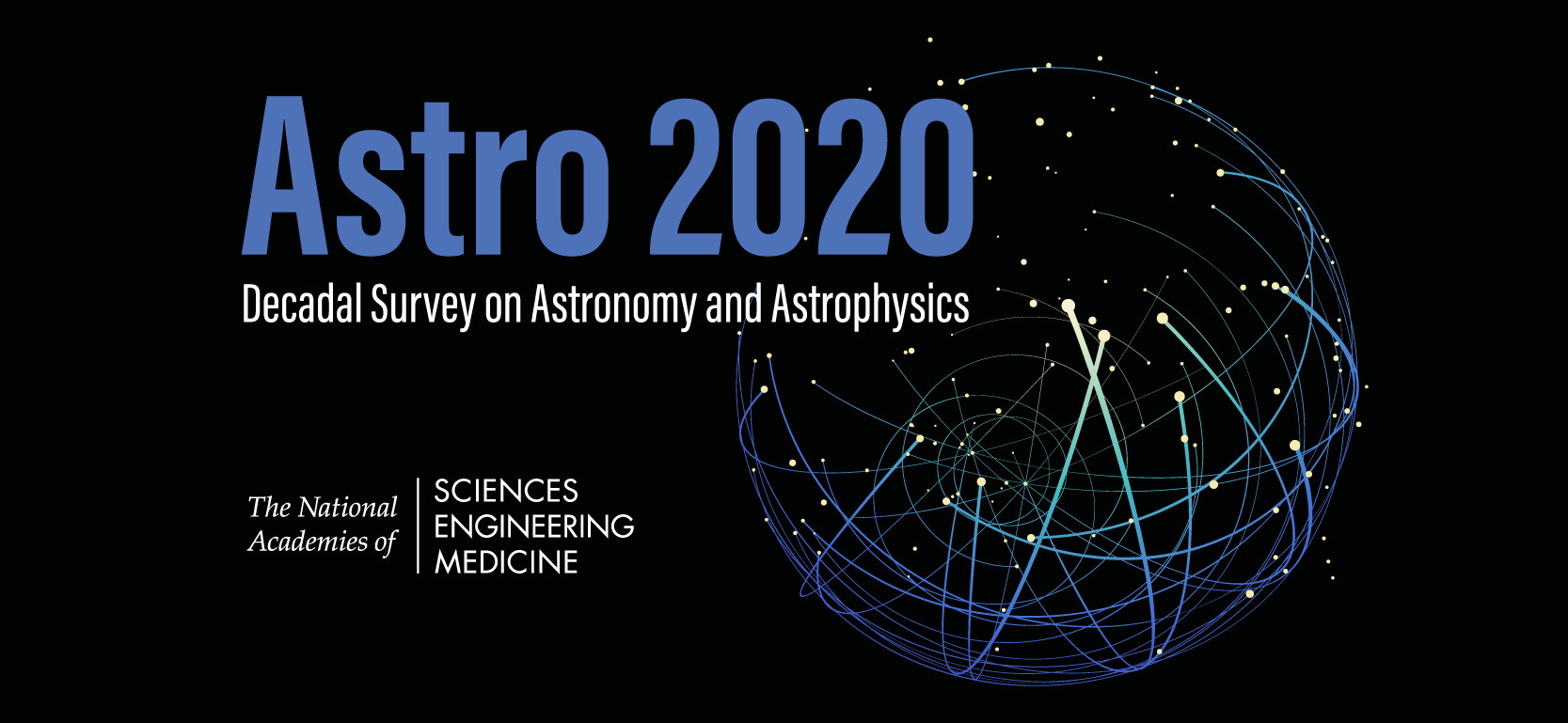
The 2020 Astronomy and Astrophysics Decadal Survey (Astro 2020) Call for White Papers has been published by the National Academies of Sciences, Engineering, and Medicine. To assist with coordination in the multi-wavelength community – with emphasis on radio-millimeter-submillimeter wavelengths – the NRAO has created a website to compile and broadly disseminate white paper topics, ideas, and submissions, particularly those relevant to a next generation Very Large Array.
This website and planned white papers list will be publicly available and will strive to enable improved communication regarding Astro 2020.
To add summary information to this website regarding an Astro 2020 white paper that you intend to submit, you need complete only a brief form with your paper’s title, the first author, any contributing authors, and a brief description. Alternatively, this information can be mailed to astro2020.wp@gmail.com, and NRAO staff will update the website table.
Astro 2020 white paper submissions will be open from Monday, 7 January 2019 (12:01 a.m. EST) through Tuesday, 19 Februray 2019 (5:00 p.m. EST). Please visit the National Academies website for additional information.
The NRAO looks forward to working with the astronomy community and the National Academies to craft an exciting future that opens vast new discovery space and enables the highest impact science.
Semester 2019A Proposal Outcomes

The National Radio Astronomy Observatory (NRAO) has completed the Semester 2019A proposal review and time allocation process for the Very Large Array (VLA). A total of 242 new proposals were received for the 1 August 2018 submission deadline. The oversubscription rate (by proposal number) was 2.2 and the proposal pressure (hours requested over hours available) for both the A and B configurations was 2.0. This pressure is similar to that for Semester 18B and somewhat higher than has been reported for semesters prior to 18B – the difference results from the discovery that some proposals were being neglected in calculating the VLA proposal pressure. Correcting this omission indicates that the long-term average proposal pressure for the VLA is between 2 and 3. One large and 36 time critical (triggered) proposals were received. There was significant demand for the time made available on space observatories through inter-observatory agreements, and nineteen proposals requesting time on the Hubble Space Telescope, Swift or Chandra (together with AUI/NRAO telescope time) were submitted.
The proposals were reviewed for scientific merit by eight Science Review Panels (SRPs) and for technical feasibility by NRAO staff. These reviews were completed in September – October 2018 and then considered by the Time Allocation Committee (TAC) at a face-to-face meeting on 23-24 October 2018 in Socorro, New Mexico. The TAC – comprising the 8 SRP chairs – was charged with recommending a science program for Semester 2019A to the Observatory Director. The recommended program was reviewed and approved on 6 November 2018.
Proposals submitted to the Green Bank Observatory (GBO) and Long Baseline Observatory (LBO) were assessed through the same process. Forty-six proposals for the Very Long Baseline Array (VLBA) were received for the 19A Semester, corresponding to an oversubscription rate of 2.1 and a proposal pressure of 2.2. The science program for the VLBA is available here. For information on proposals for GBT observations, visit the GBO website.
A disposition letter was sent to the Principal Investigator and Co-Investigators of each proposal on 13 November 2018 and a TAC report containing information for proposers and observers, including statistics and telescope pressure plots, was released the same day. The approved science program for the VLA has been posted to the NRAO science website. The authors, title, abstract, and scheduled hours for each approved proposal can be accessed from the Proposal Finder Tool.
The Student Observing Support program continues to be available for NRAO observing programs and we encourage Principal Investigators of highly ranked VLA and VLBA proposals to consider applying for support.
The NRAO welcomes community feedback on the proposal review and time allocation process. Please provide such feedback via the Proposal Review department of the NRAO Helpdesk.
Change to NRAO Proposal Science Categories
Starting with the Call for Proposals for Semester 2019B, NRAO will implement a change to the science categories used for the scientific assessment of proposals submitted for the VLA, VLBA, and GBT. The scientific category of Energetic Transients and Pulsars – ETP (encompassing X-ray binaries, cataclysmic variables, supernovae, gamma-ray bursts, pulsars), will be split into two separate categories. This change is being made because the number of ETP proposals has increased substantially over the past few years to the point where it has become impractical to manage through a single panel (even though the number of reviewers on the ETP panel has been increased from 6 to 9). The growing interest in transient radio sources suggests that this issue is likely to continue, and perhaps become more acute in future.
The new science categories will be Gravitational Waves and Energetic Transients – GWT (Supernovae, Gravitational Wave Sources, Gamma-ray Bursts, Tidal Disruption Events, Fast Radio Bursts, Exotic/unknown transients) and Pulsars and Compact Objects – PCO (Millisecond Pulsars, Cataclysmic Variables, Black Hole and/or Neutron Star X-ray Binaries, Pulsar timing, Pulsar proper motion).
Please see the full listing of the NRAO Science Review Categories.
Principal Investigators will need to use these new categories for all proposals submitted after 4 January 2019, including proposals for Semester 2019B and any Directors Discretionary Time (DDT) proposals submitted after that date.
If you would you like to see all the VLA, GBT, and VLBA proposals in your science category you could volunteer to be a Science Review Panel (SRP) member by filling out the simple online form. Members of NRAO SRPs play a very important role in identifying the Science Programs for these world-leading radio telescopes.
Being a reviewer could help you:
- Learn what science other astronomers are interested in;
- Get a sense of what makes the most compelling proposals;
- Build your group of professional contacts and potential collaborators;
- Understand the review process for a major observatory.
First Announcement: Radio/mm Astrophysical Frontiers in the Next Decade

Darden Business School, University of Virginia
Charlottesville, Virginia
http://go.nrao.edu/ngVLA19
This workshop will review the astrophysical frontiers identified in the Science White Papers submitted to the Astro 2020 Decadal Survey. A particular focus will be on those science frontiers that demand observations at centimeter and/or millimeter wavelengths across all Astro 2020 thematic areas. A broad range of innovative ideas and approaches will be described, and this workshop will allow those ideas to be explored in view of the current and forthcoming facilities, including the next generation Very Large Array (ngVLA). The program will be designed primarily around contributed presentations highlighting science frontiers and potential observations with the ngVLA. Such observations will additionally be discussed in the broader context of multi-wavelength and multi-messenger astronomy. Contributions from early career researchers will be especially welcomed.
The ngVLA will proceed into a detailed design and development phase in 2020. The ngVLA Science Advisory Council and the National Radio Astronomy Observatory (NRAO) aim to ensure that the ngVLA will be capable of making the measurements required to fulfill the community’s vision for radio wavelength astronomy over the next decade and beyond.
For this workshop, we anticipate there being a modest amount of travel support for students and those in need, upon request.
Please visit the conference website for additional information.
ngVLA Project News
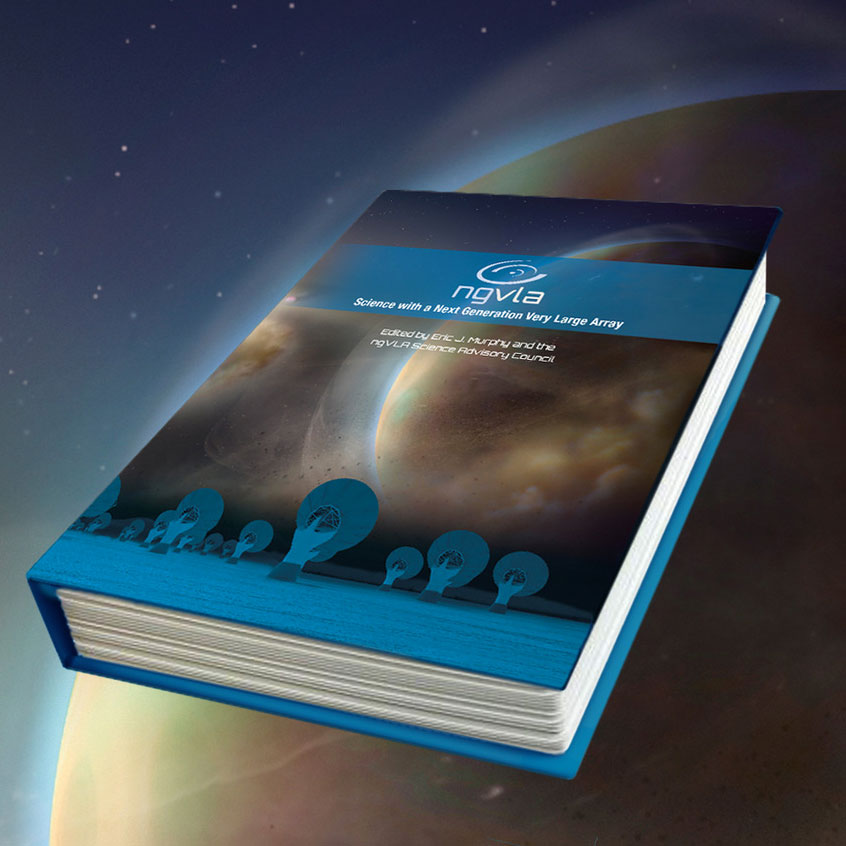
[click to enlarge]
The ngVLA Science Book is at the printer and will be published via the Astronomical Society of the Pacific Monograph series. Please stop by the NRAO booth at the January 2019 American Astronomical Society (AAS) meeting in Seattle to have a look at the hardcopies! While nearly all chapters were submitted to the arXiv during the week of 15 October, the published version should be available on ADS by the AAS meeting. We again thank all who have contributed to this exciting collection of transformative science, the arXiv staff for effectively dealing with the contributions deluge, and encourage all to review the chapters on ADS.
With nearly 90 chapters (850+ pages) from 285+ authors, this volume highlights key areas of astrophysics that are ripe for major breakthroughs and underscores the broad U.S. and international support for pursuing a next-generation Very Large Array (ngVLA). While this published volume will serve as a critical snapshot for the ngVLA project status and a vision for the ngVLA transformational science, we envisage this science book as a living document that will be periodically updated through the initiation of construction.
7th VLA Data Reduction Workshop: 1st Announcement
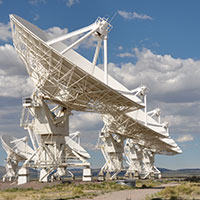
The NRAO is pleased to announce the 7th VLA Data Reduction Workshop, which will be held 7-18 October 2019 in Socorro, NM, USA.
The main goal of this Workshop is to assist observers with the challenges of Very Large Array (VLA) data reduction posed by the increased flexibility and complexity of the instrument. We will provide lectures on various topics and allow participants to reduce and image their own data while local expert staff members are available for consultation.
Please note that this is an advanced Workshop and, unlike our summer Synthesis Imaging Workshops, is not intended for those who are new to radio interferometry. Prior experience with AIPS, CASA, or MIRIAD is required. As we will be using CASA as our main data reduction package, a working knowledge of it would be helpful.
Unlike previous VLA data reduction workshops, this workshop will span two weeks: The first week will include both lectures and dedicated time for data reduction and imaging, and the optional second week will be devoted primarily to data reduction and imaging of each participant's own data.
A web page announcing workshop details (program, lodging, travel, etc...) will go live and be advertised in the coming months, and will include an online registration form. There is no registration fee to attend the workshop. However, space will be limited to about 30 participants, so please register early to reserve your spot.
Socorro is served by the airport in Albuquerque (75 miles north of Socorro), and we would like to note here that this data reduction workshop will overlap in time with the International Albuquerque Balloon Fiesta, which draws many visitors to New Mexico. Therefore, we urge you to make your travel plans (airline and rental car) as early as possible.
We look forward to welcoming you to NRAO and Socorro next October!
ALMA Data Reduction Party: 13-15 March
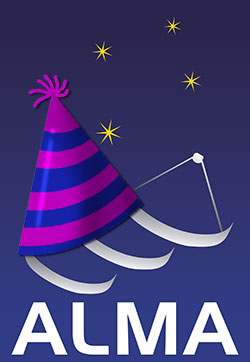
Are you the PI of a successful ALMA project? Have you received a beautiful, giant dataset that you need to get the best science from? You are not alone! Many of us have been or are in this situation, and the North American ALMA Science Center has exactly what you need to figure this out. We invite North American ALMA users to join us for a free, three-day ALMA Data Reduction Party that will take place 13 – 15 March 2019 at the North American ALMA Science Center in sunny Charlottesville, Virginia.
We will provide access to our data reduction cluster, data analysts to prepare your dataset locally, and help you understand the calibration and preliminary imaging that has been done on your dataset. Staff scientists with CASA expertise will also be available to help you decide if you can push the imaging further, if self-calibration will improve your results, and how to analyze and display your fabulous data in a way that allows you to extract the exciting science results that you know are in there. All you need to bring are your laptop, your enthusiasm, and your questions.
Registration for this event is free and travel support will be provided, but space is limited, so please sign up early. For more information, please see our website.
See you in March!
ALMA Program News
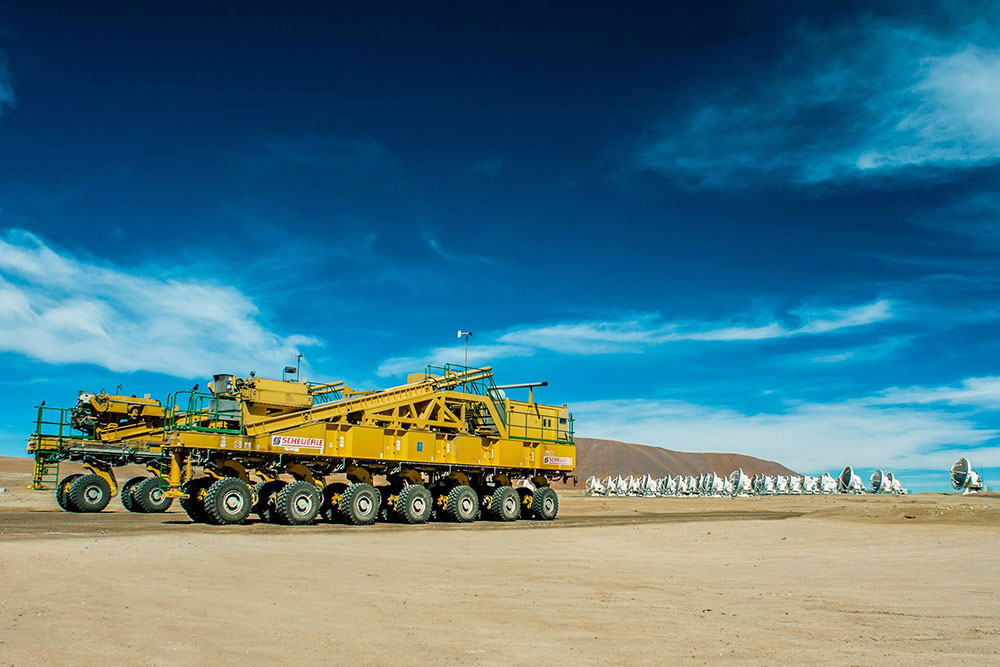
Sergio Otarola Photography
The ALMA Transporter named Lore approaches the ALMA antennas like a predator approaching the herd
[click to enlarge]
Science Operations
The North American ALMA Science Center has organized a Special Session at the 233rd AAS Meeting (Seattle, WA) that will take place on Wednesday, 9 January 2019, 10-11:30 a.m. The speakers at this Special Session will present recent ALMA scientific results, news, and expectations for ALMA performance and science in future Cycles. The pre-announcement for ALMA Cycle 7, with science operations to begin 1 October 2019, will be released soon at the ALMA Science Portal.
ALMA is currently executing a contracting array cycle, now in configuration C43-4 but shortly to go into configuration C43-3, which has a 1.4 arcsec beam at 100 GHz and offers 15 m – 0.5 km baselines. The ALMA configuration will contract further until it reaches its most compact configuration, C43-1, in late January 2019.
At its November 2018 meeting in Santiago, Chile, the ALMA Board selected Dr. Karin Öberg, Associate Professor of Astronomy at the Harvard-Smithsonian Center for Astrophysics, to be the Board Chair for the next two years.
ALMA Science Sustainability
A Call for Proposals for ALMA Development Studies was released 3 December 2018.
The deadline for proposals is 1 May 2019 for funding during Fiscal Year 2020, depending on the U.S. Federal budget process. We welcome any member from within the North America ALMA Operations Partnership to submit a proposal to investigate a potential ALMA upgrade (hardware, software, or advanced techniques). Particular attention should be given to ideas which may address the goals elucidated in the ALMA Development Roadmap, ALMA Memo 612.
SMA Call for Large Scale and Standard Projects Proposals – 2019A Semester
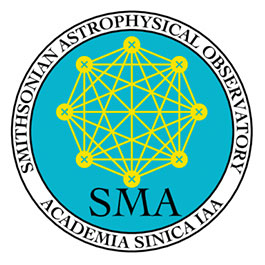
We wish to draw your attention to the Large Scale Projects program for observations with the Submillimeter Array (SMA), which is now accepting Notices of Intent to propose. Under this program, proposals dedicated to answering major astrophysical questions having significant scientific impact requiring observing times of order 100-1000 hours are solicited. In this communication, we are also pre-announcing the dates for standard observing proposals. These calls are for the 2019A semester with observing period 16 May 2019 – 15 Nov 2019.
Large Scale Project Proposals
- Notice of Intent (required): 10 January 2019
- Proposal submission deadline: 07 February 2019
Standard Observing Proposals
- Proposal submission deadline : 07 March 2019
The SMA is a reconfigurable interferometric array of eight 6-m antennas on Maunakea jointly built and operated by the Smithsonian Astrophysical Observatory and the Academia Sinica Institute of Astronomy and Astrophysics. The array operates in the 230, 345 and 400 GHz bands, observing simultaneously with two orthogonally polarized receivers, one in the 230 GHz or 345 GHz band and the other in the 240 GHz or 400 GHz band (with full polarimetric observations available using the 230+240 or 345+400 band combinations). The SWARM correlator processes 8 GHz bandwidth for each receiver in each sideband, for a total of 32 GHz, at a uniform 140 kHz resolution. This 32 GHz frequency coverage can be continuous where the tuning ranges overlap for the two orthogonally polarized receivers. The SMA provides flexible, wide band frequency coverage that delivers high continuum sensitivity and excellent spectral line capabilities. A full transit observation offers continuum sensitivity of 250 or 600 micro-Jy (1 sigma) at 230 or 345 GHz in good weather conditions (precipitable water vapor 2.5mm and 1.0mm, respectively). The corresponding line sensitivities at 1 km/s resolution are 35 and 80 mJy. The small antennas allow access to low spatial frequencies in the sub-compact configuration, and at the other extreme, the finest angular resolution with the very extended configuration at 345 GHz is ~ 0.25". The compact and extended configurations complete the range. The characteristics and performance of the SMA are both similar and complementary to those of the stand-alone Atacama Compact Array (ACA) component of ALMA. For more information about SMA capabilities, visit the SMA Observer Center website and explore the set of SMA proposing tools. Current and archived SMA Newsletters provide a sampling of the wide variety of science possible with the SMA.
The Large Scale Projects program follows a phased development, submission and review path, with the final selection of successful proposals synchronized with the TAC process for regular proposals. Accordingly, a Notice of Intent is required ahead of full submission.
A second announcement will be circulated when the standard proposal system opens for submissions. We expect that to occur in mid-January.
For more details visit the following websites:
Questions or comments regarding the Call for Large Scale Proposals can be addressed to sma-largescale@cfa.harvard.edu and on standard proposals to sma-proposal@cfa.harvard.edu.
2019 LAD Early Career Award Goes to Brett McGuire
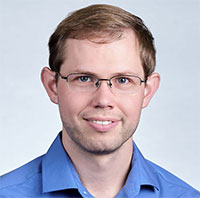
Brett McGuire
The Laboratory Astrophysics Division (LAD) of the American Astronomical Society (AAS) has named Dr. Brett McGuire of the National Radio Astronomy Observatory (NRAO) the recipient of its 2019 Early Career Award. Given to an individual who has made important contributions to laboratory astrophysics within 10 years of receiving their Ph.D., the award recognizes McGuire for significant laboratory and observational advancements in our knowledge of the inventory and evolution of complex molecules in the interstellar medium.
McGuire’s research combines laboratory spectroscopy and radio/submillimeter observations. He led laboratory and observational efforts resulting in the detections of propylene oxide (the first chiral interstellar molecule) and benzonitrile (the first benzene-ring molecule seen with radio astronomy), among others, in interstellar gas. He is currently leading the GOTHAM (GBT Observations of TMC-1: Hunting Aromatic Molecules) large project on the Green Bank Telescope. This 400-plus-hour observing campaign is studying the potential hidden reservoir of large complex molecules in Taurus Molecular Cloud 1, the same source in which benzonitrile was discovered. GOTHAM is coupled with a dedicated microwave spectroscopy program aimed not only at measuring the spectra of molecules of interest, but also at studying the formation of the first few aromatic rings from simple, interstellar precursors and their subsequent evolution toward the ubiquitous but enigmatic polycyclic aromatic hydrocarbons.
McGuire received his Ph.D. in physical chemistry from the California Institute of Technology in 2015. He was a Jansky Postdoctoral Fellow at NRAO and the Harvard-Smithsonian Center for Astrophysics before becoming a Hubble Postdoctoral Fellow in 2017 at the same institutions. He received a 2018 Young Investigator Award from the American Chemical Society’s Physical Chemistry Division and in addition to the GBT, has also secured observing time on the Stratospheric Observatory for Infrared Astronomy, the Atacama Large Millimeter/submillimeter Array, the Combined Array for Research in Millimeter-wave Astronomy, and other state-of-the-art telescopes.
The LAD Early Career Award includes a cash award, a framed certificate, and an invited lecture by the recipient at a meeting of the Laboratory Astrophysics Division.
Recent Media Releases
|
The Epoch of Planet Formation, Times Twenty |
|
|
Trans-galactic Streamers Feeding Most Luminous Galaxy in the Universe |
|
|
Galaxy-Scale Fountain Seen in Full Glory
|
Career Opportunities
Head of ALMA Department of Science Operations: The Joint ALMA Observatory (JAO) is seeking a senior science manager, with extensive experience, to lead its Department of Science Operations (DSO), which is responsible for the science operations of the international ALMA radio astronomy observatory in Chile. The Head of the DSO is responsible for the management and leadership of the scientific program from data acquisition to data delivery, observatory calibration, and improvements to overall performance of the observatory.
Scientist (Open Rank): The Green Bank Observatory is seeking an enthusiastic and energetic scientist to join the staff of the Observatory in Green Bank, West Virginia. The successful applicant must have knowledge of astronomy and familiarity with, or desire to learn, radio astronomical instrumentation and techniques. We are especially interested in individuals whose research complements the high-frequency capabilities of the Green Bank Telescope (GBT); but those in other areas whose research could utilize the GBT will be considered.
From the Archives
Ellen Bouton

[click to enlarge]
About this month's photo: The 500th move of a Very Large Array antenna took place on 5 November 1984. We celebrate the 34th anniversary of the move with this cartoon, drawn by Paul Harden, commemorating the milestone and the dedication of the transporter crews. The crews braved scorching sun and blowing snow (and probably blowing sand), as well as wobbling tracks (and sometimes broken ones as the cartoon suggests) to move antennas to a new location. The transporters at that time were named Hein's Trein and CamTrak, honoring long-time NRAO staff members Hein Hvatum and Cam Wade. Thanks to Peggy Perley and Ken Sowinski for background information, to Kelly Greene for the photo, and to Paul Harden for making the original drawing.
From the Archives is an ongoing series illustrating NRAO and U.S. radio astronomy history via images selected from our collections of individuals' and institutional papers. If readers have images they believe would be of interest to the Archives, please contact Ellen Bouton.


